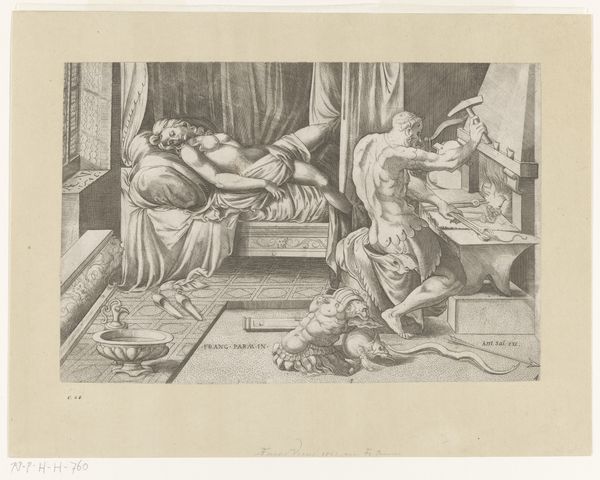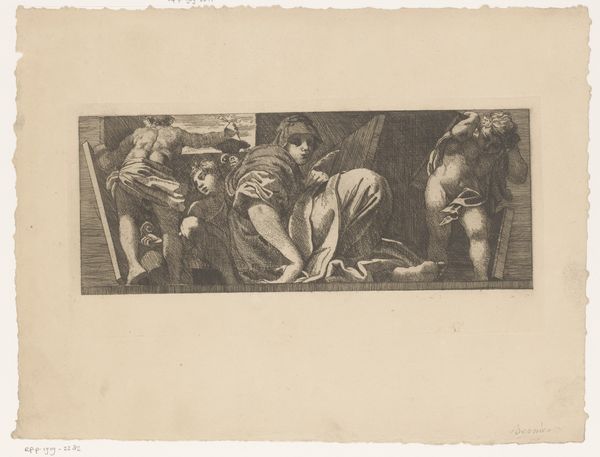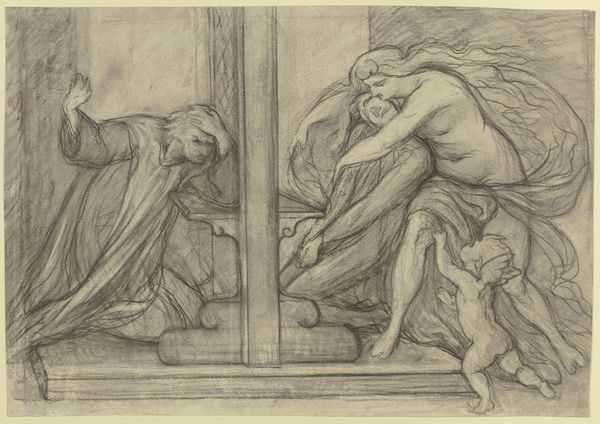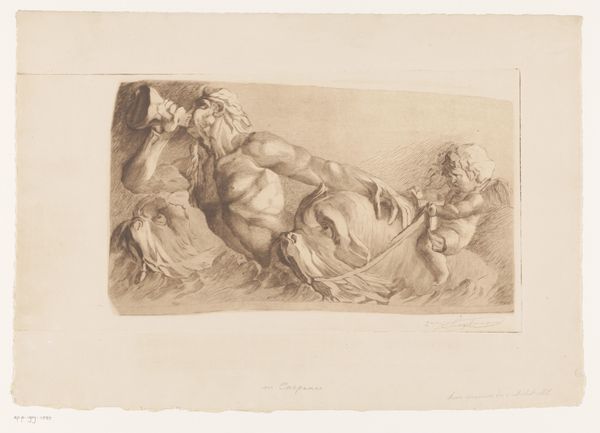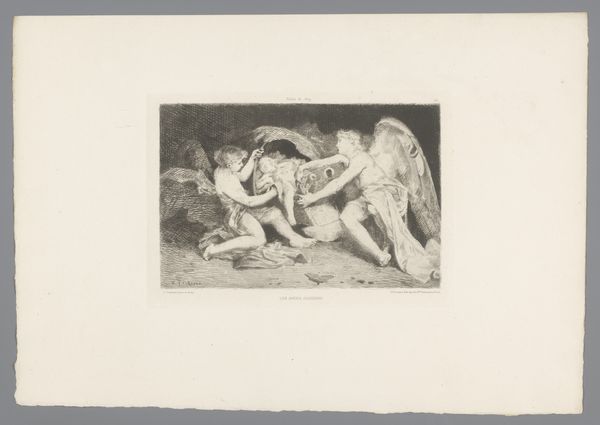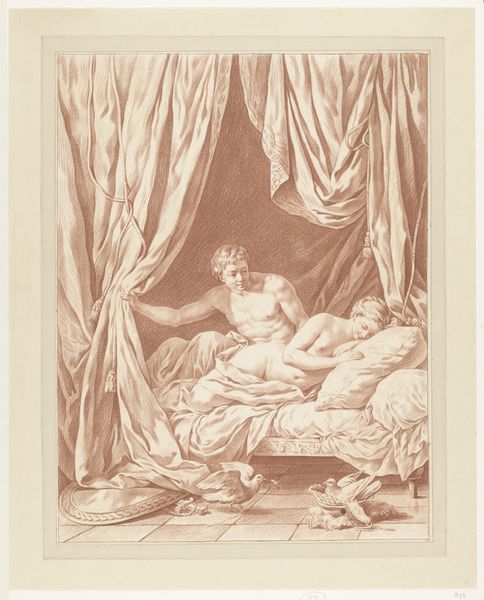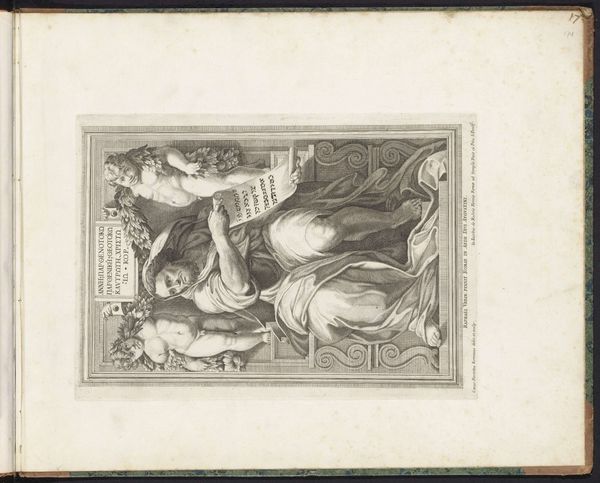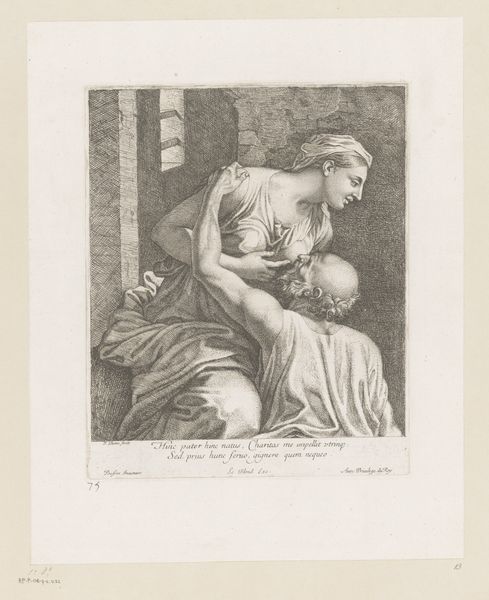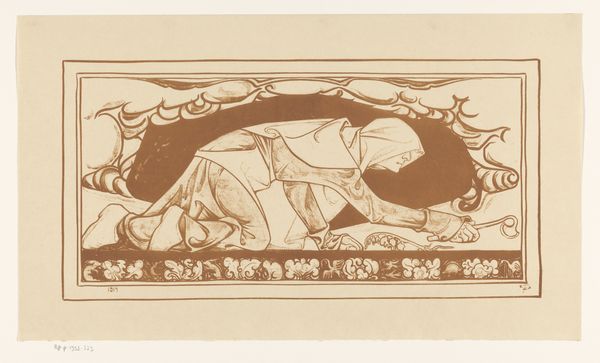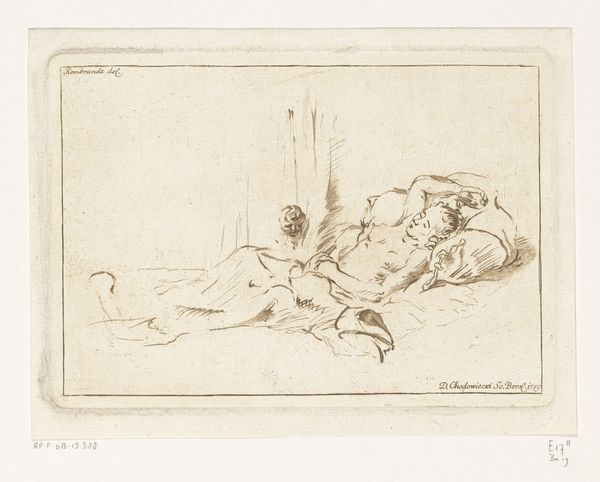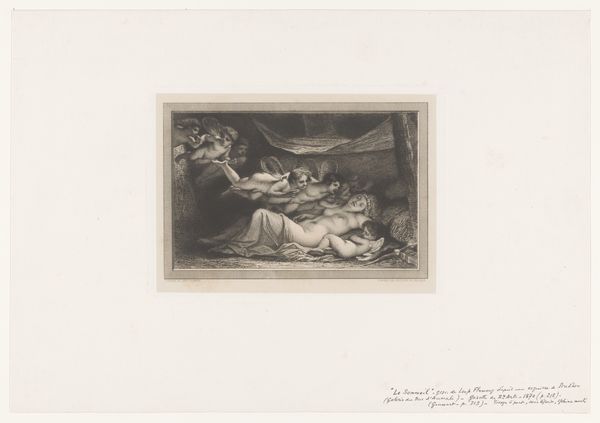
engraving
#
allegory
#
baroque
#
figuration
#
line
#
history-painting
#
nude
#
engraving
Dimensions: height 189 mm, width 391 mm
Copyright: Rijks Museum: Open Domain
Jean Pesne made this print, "Alkmene bevalt van Hercules," sometime in the 17th century, using the intaglio process of etching. With etching, a metal plate, likely copper, is coated with a waxy ground, and the artist scratches an image into this surface, exposing the metal. Immersing the plate in acid then bites the lines. This process is repeated for darker lines, before the plate is cleaned, inked, and printed. The pressure of the printing press embeds the ink into the paper, creating the finished image. Notice how this method lends itself to the creation of fine, precise lines, well-suited to the depiction of classical scenes, and allowing for subtle tonal variations and intricate detail. Etchings like this one were relatively easy to reproduce, spreading classical stories among a wider audience. It is a process that sits squarely between craft and industrial production. Understanding this allows us to appreciate not just the image, but also the means by which it came into being.
Comments
No comments
Be the first to comment and join the conversation on the ultimate creative platform.
